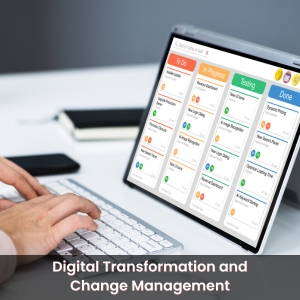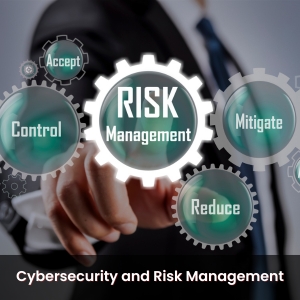Announcement
We are excited to announce the Indus Hackathon 2025, an exhilarating one-day event organized by the CSE Department of Indus University....Read more We are excited to announce the Indus Hackathon 2025, an exhilarating one-day event organized by the CSE Department of Indus University.
26th ISTE Faculty Annual State Convention will be held at Indus University on April 27, 2023....Read more 26th ISTE Faculty Annual State Convention will be held at Indus University on April 27, 2023.
26th ISTE GUJARAT STATE ANNUAL FACULTY CONVENTION & CONFERENCE ON APRIL 27,2023. MORE DETAILS WILL BE SHARED SOON....Read more 26th ISTE GUJARAT STATE ANNUAL FACULTY CONVENTION & CONFERENCE ON APRIL 27,2023. MORE DETAILS WILL BE SHARED SOON.
We are excited to announce the Indus Hackathon 2025, an exhilarating one-day event organized by the CSE Department of Indus University....Read more We are excited to announce the Indus Hackathon 2025, an exhilarating one-day event organized by the CSE Department of Indus University.
26th ISTE Faculty Annual State Convention will be held at Indus University on April 27, 2023....Read more 26th ISTE Faculty Annual State Convention will be held at Indus University on April 27, 2023.
26th ISTE GUJARAT STATE ANNUAL FACULTY CONVENTION & CONFERENCE ON APRIL 27,2023. MORE DETAILS WILL BE SHARED SOON....Read more 26th ISTE GUJARAT STATE ANNUAL FACULTY CONVENTION & CONFERENCE ON APRIL 27,2023. MORE DETAILS WILL BE SHARED SOON.

In today's digital age, information technology (IT) management is critical to corporate success, especially in the arena of e-commerce. This article explores the strategic alignment of IT for business success, the challenges of digital transformation and change management, the importance of cybersecurity and risk management, and the effective utilisation of e-commerce strategies based on consumer behaviour. Understanding these key areas is essential for management professionals seeking to navigate the digital landscape and harness the potential of technology-driven business opportunities.
Strategic alignment of IT initiatives with overall business objectives is crucial for organisations to thrive in the digital era. By ensuring that IT investments, resources, and capabilities are closely aligned with the strategic goals of the business, management professionals can drive innovation, improve operational efficiency, and enhance customer experiences. This involves a comprehensive understanding of the organisation's vision, long-term goals, and market positioning. Management professionals should evaluate emerging technologies, identify opportunities for competitive advantage, and develop IT strategies that align with business priorities.
By ensuring that technology investments are focused on the most critical aspects of the business, strategic IT alignment also enables companies to maximise resource allocation. This strategy allows management experts to evaluate IT initiatives according to their ability to increase revenue, cut costs, and improve customer satisfaction. Organisations can prevent misalignment, duplication of effort, and unnecessary spending on technology that does not contribute to the broader strategic direction by coordinating IT initiatives with business objectives.


Digital transformation is a holistic process that involves leveraging technology to revolutionise business operations, customer experiences, and organisational culture. However, implementing digital transformation initiatives requires effective change management. Management professionals must navigate the challenges associated with technological disruption, resistance to change, and organisational readiness. A well-planned change management strategy should address employee engagement, training, and communication, fostering a culture that embraces digital advancements. Successful digital transformation requires a collaborative approach that involves all stakeholders, encouraging innovation, agility, and a customer-centric mindset.
By fostering a culture of innovation & agility, management professionals can ensure that digital transformation becomes ingrained in the organisational DNA, enabling continuous improvement and adaptation to evolving market dynamics. Change management becomes the catalyst for realising the full potential of digital transformation and achieving sustainable business growth.
Cybersecurity and risk management are essential factors for organisations in the digital world. Management professionals are responsible for taking proactive measures to safeguard sensitive data, reduce cybersecurity threats, and adhere to legal requirements. Strong security measures, including firewalls, encryption, and secure authentication procedures, are required due to the continuously changing nature of cyber threats. Identification of potential vulnerabilities, evaluation of threat impact, and application of suitable measures are all part of risk management.
They must proactively identify potential vulnerabilities, assess the impact of cyber threats, and implement robust security measures to protect sensitive data and systems. This includes implementing firewalls, encryption protocols, and secure authentication methods to prevent unauthorised access. Security audits and assessments should be performed on a regular basis to detect and resolve any gaps or vulnerabilities.
In order to keep ahead of new threats, management professionals should also ensure that their staff has received training in cybersecurity best practices, create incident response plans, and routinely assess and update security measures.


Understanding consumer behaviour is vital for developing effective e-commerce strategies. Management professionals need to analyse consumer trends, preferences, and purchasing habits to tailor their offerings and create personalised experiences. Utilising data analytics and customer relationship management (CRM) systems, businesses can gain insights into customer behaviour, target specific segments, and deliver relevant marketing campaigns. Furthermore, management professionals should focus on enhancing the user experience through intuitive website design, streamlined checkout processes, and personalised product recommendations. By leveraging social media platforms, online reviews, and influencer marketing, businesses can engage with consumers, build trust, and foster brand loyalty in the competitive e-commerce landscape.
E-commerce strategies must encompass a deep understanding of consumer behaviour to drive successful outcomes. Management professionals should invest in market research and data analysis to uncover valuable insights into consumer preferences, shopping patterns, and decision-making processes. By identifying key trends and emerging consumer demands, businesses can align their product offerings, pricing strategies, and promotional activities to meet customer expectations.
In the digital environment, e-commerce and information technology management are linked, providing enormous prospects for business growth and innovation. Business success depends on the strategic alignment of IT projects, efficient change management, strong cybersecurity safeguards, and data-driven e-commerce strategies based on customer behaviour. To keep ahead of the competition, management professionals must embrace technology breakthroughs, adapt to the fast-changing digital world, and use IT capabilities. Organisations can succeed in the digital age and create enduring client relationships by comprehending and utilising the potential of information technology and e-commerce.
By tailoring their e-commerce offerings, user experiences, and marketing campaigns to align with consumer expectations, organisations can create personalised and engaging interactions, fostering customer loyalty and advocacy.
In conclusion, the seamless integration of information technology management and e-commerce is a driving force in today's digital landscape.